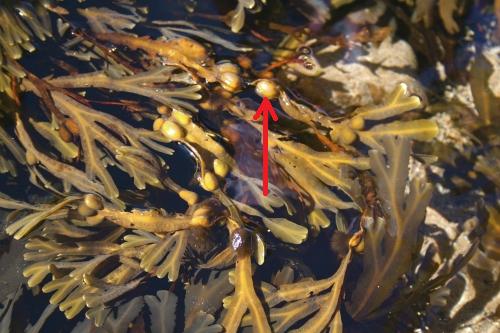Commonly Confused Supplements

Many supplements have similar-sounding names, leading to confusion and disappointment with results.
With thousands of dietary supplements on the market and more emerging every day, there are a growing number of similar-sounding products making it all too easy to buy the wrong product for your needs. For example, there’s calcium ascorbate, calcium pyruvate and calcium d-glucarate, but none of these is actually a calcium supplement. Here’s a guide to help you sort out the most commonly-confused supplements.
Consider glutamine, glucosamine and glutathione. These three supplements have similar-sounding names but completely different functions and purposes.
Glutamine (GLUE-ta-meen) is an amino acid supplement that is used for a very wide range of purposes. It supports muscle growth, immune function and intestinal health among other things.
But don’t confuse glutamine with glucosamine (glue-COSE-a-meen). Glucosamine is primarily a joint-support supplement. It won’t do the things glutamine does and vice-versa. But there is a relationship between them since glutamine is involved in the synthesis of glucosamine.
Glutathione isn’t an amino acid, technically, but it’s often marketed and merchandised alongside amino acid supplements. Glutathione (glue-ta-THIGH-own) is a peptide (a small protein). Glutathione forms part of one of the liver’s most important antioxidant and detoxification enzymes, so it’s used solely as a liver-support nutrient alongside things like milk thistle extract and alpha lipoic acid.
How about calcium? You’ll find a lot of “calcium” supplements that aren’t actually calcium supplements.
Take calcium ascorbate. It does provide some calcium, but not much. It’s actually a non-acidic form of vitamin C.
Then there’s calcium pyruvate. It also provides a little calcium, but it’s the pyruvate (pie-ROO-vate) compound that matters in this supplement. Calcium pyruvate, sometimes referred to as just “pyruvate”, supports energy production within the cell and is sometimes used as part of a diet and weightloss program.
Calcium d-glucarate is distinct from these. Calcium d-glucarate (GLUE-ca-rate) is another liver detoxification factor like glutathione although it works in a different way.
Calcium caseinate (CASE-in-ate) is yet another “calcium” supplement that isn’t really a calcium supplement. Instead, calcium caseinate is a slow-release protein supplement derived from milk, just like fast-releasing whey protein.
Bladderwrack is a sea vegetable that gets its name from small, air-filled bladders that help to make the fronds of this seaweed buoyant in water. Like most seaweeds, it’s a good source of the mineral iodine, which is needed for thyroid support and proper metabolism.

Bladderwrack gets its name from small, air-filled "bladders" that keep the plant buoyant in water. It has nothing to do with the human urinary bladder.
But there have been a great many customers who order bladderwrack on the assumption that its name refers to the urinary bladder, and so assume that it’s an herbal remedy for bladder problems. Bladderwrack is unlikely to make urinary problems worse, but it is primarily a supplemental source of iodine used for thyroid support. Much better choices for bladder support supplements would be things like D-mannose and cranberry extract.
Pectins are soluble fibers derived from fruits and some vegetables. As soluble fibers, they can help promote regularity and healthy cholesterol levels. Pectin fiber is available as a single-ingredient supplement or as part of a multi-fiber blend.
But don’t confuse apple or grapefruit pectin with a supplement labeled as modified citrus pectin. In fact, modified citrus pectin is technically not even a fiber since it can pass through the intestinal wall. Once it does so, modified citrus pectin is thought to play a role in promoting cellular health and detoxification through unique mechanisms.
Carnitine is sometime confused with carnosine.
Carnitine is an energy factor for cells, which use it to facilitate the burning of fatty acids for energy. Carnitine supplements are used by athletes and to promote heart health, since the heart muscle depends on fat burning for abut 2/3 of its energy requirements.
Carnosine is also en energy factor for cells but it works in a different way. It helps increase endurance by stabilizing the pH level (acid-alkaline balance) within cells such as muscle cells. As muscle cells perform work, acidic waste products accumulate internally faster that they can be removed or buffered. When the pH finally falls beow a certain threshold, the cells internal environment becomes too acidic to sustain further functioning, and we experience this as muscle fatigue or, in weight training, muscle “failure”. Carnosine supplements are used to help offset this pH change, thereby increasing the work capacity of the muscles.
Both fish oil and fish liver oil are very popular and useful supplements, but not as similar or interchangeable as their names suggest.
Fish oil is a good source, actually the best source, of critical nutrient fats known as omega-3 fatty acids EPA and DHA. You want at least one gram of combined DHA and EPA per day. It takes from 1-3 large fish oil softgels to provide that amount.
Fish liver oil provides only small amounts of omega 3s, but also vitamins A and D. It’s 3 supplements in one. But fish liver oil provides enough vitamin A and D that, if you were to use only fish liver oil to get your 1 gram daily of DHA and EPA, you’d risk getting to much of the vitamins A and D. You can certainly use both, but understand their differences; they’re not interchangeable.
Some customers have also confused fish oil with omega-3s, which, as we’ve seen aren’t quite the same thing either. Omega-3s are the required nutrient supplied by fish oil, but are also supplied by fish liver oil, flax oil, krill oil, walnuts, seafood and a few other foods.
Cherry bark and cherry fruit are both popular herbal substances that get confused too. Cherry bark is usually used in cough preparations whereas cherry fruit is used as an antioxidant and specifically to support joint health.



